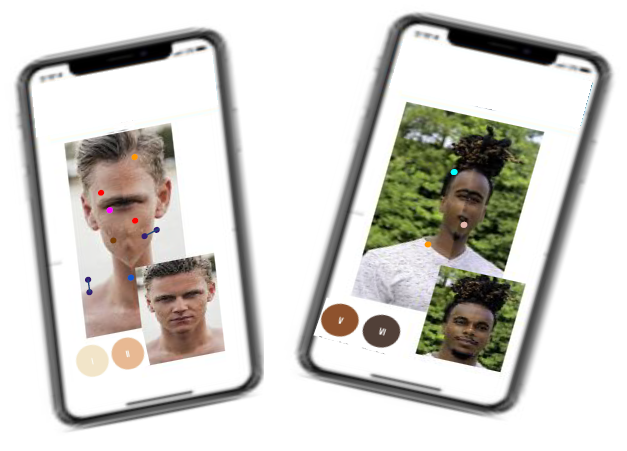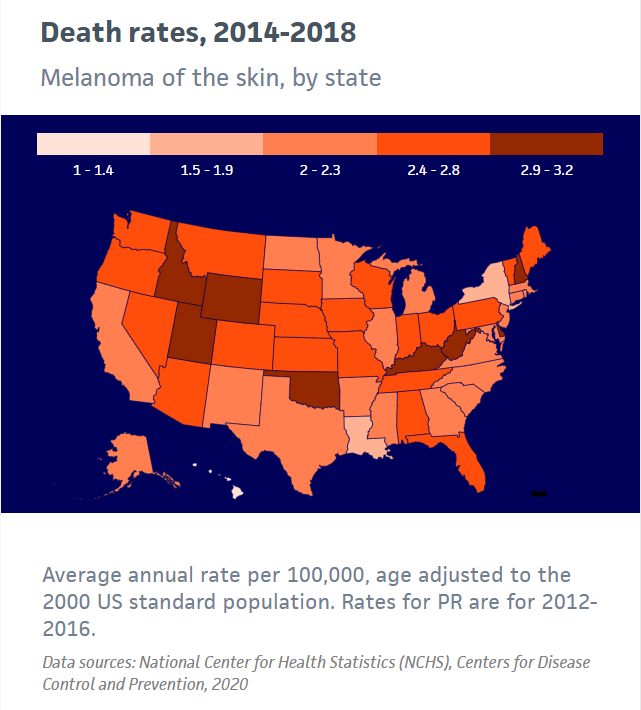|
|
Globally, one-third of the world's population is affected by skin disease |
|
In the United States, 5M people are treated for skin cancer each year
|

|
THE CHALLENGE
Clinicians are not specifically trained to recognize skin health issues in people of color. Skin issues present differently in people of color - a diagnostic and early detection problem that impacts 66% of the world's population with Skin Type III or above.
THE RESULT
A general lack of clinical skills, knowledge, data bias, and social determinants contribute to medical errors (misdiagnoses & missed diagnoses) that negatively impact patient safety and health outcomes exacerbating existing healthcare disparties for people of color.
|
While melanoma occurs less often |
people of color are 4x more likely to receive a late-stage diagnosis and 1.5x more likely to die than their caucasian counterparts.
|
|

|
|
THE SOLUTION
We are not all the same. For years, medicine and science has shied away from looking at differences to avoid racial bias. But when it comes to health issues for people of color, we can't afford to be "colorblind". The solution begins by asking better - different - questions that extend
stakeholder knowledge and understanding of skin diseases.
conflu3nce is leveraging its proprietary and patented methods to develop practical skin health screening tools. Each image enhancement method is designed to respect color differences toward building better knowledge and datasets and eliminating bias and disparities, and improving health outcomes for ALL people.

ENGAGING ALL STAKEHOLDERS
conflu3nce's comprehensive solution is designed to maximize early detection by engaging both clinical and consumer stakeholders in prevention and early-detection by building health literacy skills and tools to support self-screening, self-reporting, and to address social determinants that affect trust and communication issues> Conwhich is complemented by bridging the significant gaps in professional dermatological diversity-aware knowledge and training.
Any solution must be complemented by increased awareness in risk reduction and early detection to improve health outcomes. Community-wide educational programs to improving health literacy in general and skin health in particular can serve to address long-standing trust and communication issues in effecting generational change. With condlu3nce's purpose-built solution means we seek to address the significant gaps in professional, dermatological diversity-aware knowledge and training with tools that advance skills and process for ALL.

|
OriAI App: tools for clinicians - tools for learning
(in development)
|
|
|
 |
Enhancing Visualization

Refining ABCDE analysis with SnP

Conserving pigmentation for interior to edge to background analysis

|
Just the Facts


|
Articles & Reference Links
Are the Fitzpatrick Skin Phototypes Valid for Cancer Risk Assessment in a Racially and Ethnically Diverse Sample of Women?
Sommers, Marilyn S., et al. Ethnicity & disease 29.3 (2019): 505-512.
Racial disparities persist, worsens in melanoma survival. Lisette Hilton. Dermatology Times. October 2, 2020.
Gaps in the understanding and treatment of skin cancer in people of color. Kailas, Ajay, et al. Journal of the American Academy of Dermatology 74.5 (2016): 1020-1021.
Racial disparities in melanoma survival. Dawes, Sean M., et al. Journal of the American Academy of Dermatology 75.5 (2016): 983-991.
Skin cancer knowledge, awareness, beliefs and preventive behaviors among black and hispanic men and women.
Lunsford, Natasha Buchanan, et al. Preventive medicine reports 12 (2018): 203-209.
The Impact of Mobile Health on Cancer Screening: A Systematic Review. Salmani, Hosna, Maryam Ahmadi, and Nafiseh Shahrokhi. . Cancer informatics 19 (2020): 1176935120954191.
A characterization of sun protection attitudes and behaviors among children and adolescents in the United States. Patel, Akash R., et al. Preventive medicine reports 16 (2019): 100988.
|
ABOUT
conflu3nce is dedicated to developing user-centric solutions to enhance user engagement and improve health literacy skills for providers and consumers. By design, in maximizing our understanding of image characteristics we support early detection strategies to improve health outcomes for people of color, and by default for ALL people.
|
 |
|
|
|